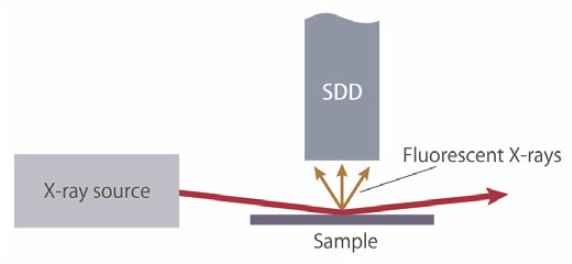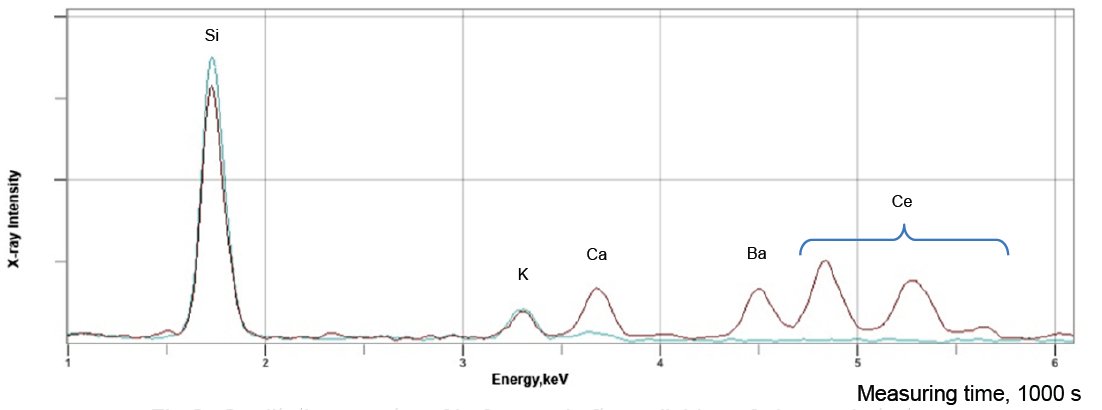Pharmaceutical Intermediates by TXRF
Introduction
In TXRF, an incident X-ray beam irradiated the sample at an extremely shallow angle and efficiently excites elements on the surface with little scattering of X-rays (Figure 1). It provides dramatically reduced background levels in the measured energy dispersive X-ray fluorescence spectra. High sensitive analysis for trace elements on the glass having a smooth surface, can be carried out utilizing its characteristic.

Figure 1: TXRF principle
Measurement and results
Various materials are used in the process of polishing glass to remove fine scratches on glass surface or improve smoothness. Hematite particles (αFe₂O₃) were used formerly and recently using Bastnasite particles (CeO₂ basis) has become mainstream. The new materials are also being studied instead of expensive R.E.
Bastnasite abrasive is known to be effective for polishing by chemical reaction between its main component CeO₂ and glass. At the same time, however, it tends to remain on the sample surface after polishing. On a measurement result of a commercially available glass substrate, Ce and Ba, which are abrasive components, were detected on the surface, suggesting that the abrasives are remained. It can be removed by re-polishing with alumina abrasive. Figure 2 shows the qualitative spectrum before and after polishing.

Figure 2: Qualitative spectra of before and after polishing of glass substrate
Since scattered X-rays are very strongly detected in a general-purpose XRF in which incident X-rays reach the inside of sample, it is difficult to detect the abrasive elements remaining on the substrate. On the other hand, since TXRF efficiently excites the vicinity of the surface efficiently and does not generate scattered X-rays, it is a measurement method that can obtain surface information with high sensitivity.
Since XRF has a feature to separately measure even elements with chemically similar properties, it is also possible to detect rare earth elements such as La, Ce and Nd individually. It can be applied to the qualitative analysis of abrasives which are composite compounds of rare earth elements.

Contact Us
Whether you're interested in getting a quote, want a demo, need technical support, or simply have a question, we're here to help.
